Girl from the north country

Doa wears bodysuit BASERANGE
Doa, aka d0lgur, aka Ísadóra Bjarkardóttir Barney, aka daughter of Björk, is a teenage student, record store employee, filmmaker, singer and now actor, about to make her big-screen debut in the new film from The Witch director Robert Eggers. Which means she is going to be famous, in her own right, soon enough.
Culture
Words: Craig McLean
Photography: Collier Schorr
Styling: Danny Reed
Taken from the new print issue of THE FACE. Get your copy here.
What’s in a name?
When the novice filmmaker posted Almanak on YouTube, on 21st November 2020, she wrote, in the credits, simply: “short film by doa”, no indefinite articles or capital letters required.
Having begun with the words “Haust 2020” (“autumn” in Icelandic), the Belfast-set video diary ended 510 seconds later with the cast and crew credits: ísadóra, dóa, faun, bjarkardóttir, barney, dragu and stuntgirl. They were, sequentially, the actor (leikur), director (leikstjórn), author (höfundur), director of photography (ljósmyndastjórn), editor (klippun), costume design (búningahönnun) and 1st AD (er, 1st AD).
They were the same person. “All of those names, because it was all me, are all just different variations of my own name,” says Doa, smiling and fidgeting just a bit embarrassedly. “It was a little tongue-in-cheek.”
On Instagram, the 19-year-old is d0lgur to her 11.7k followers. Then, when she’s acting, Doa goes by Doa Barney. That’s how she’s credited on The Northman, the forthcoming Viking epic from Robert Eggers (The Witch, The Lighthouse), who co-wrote the script with Icelandic poet Sjón. Due out in April, it stars Alexander Skarsgård (last seen as Succession’s “slab of gravlax” GoJo tech-bro Lukas Matsson) in the title role, alongside Anya Taylor-Joy, Nicole Kidman, Willem Dafoe and Ethan Hawke.
In the American director’s intense-looking 10th-century revenge saga – which is all mud, rain, snow, spear-throwing (and catching), bare-chested warriors, whey-faced wenches, witchy ululations and fierce rowing of longboats – first-time actor Doa plays Melkorka. She’s an Irish girl, 16, held captive on an Icelandic farm.
“She’s on Anya’s team, in the kitchen. They make soups together. Melkorka is her Icelandic slave name, and she likes to sing, so take that as you may!” Doa says, meaningfully, but with a laugh.
Her full given name is Ísadóra Bjarkardóttir Barney. That’s how she’s credited on Songs We’re Sung, a compilation album put together in New York and released last summer to raise money for non-profit Refugees International.
According to the album’s Bandcamp page, it was “inspired by the concept of having different artists from around the world do covers of songs that were either sung to them by their parents as children or songs that overall had a strong impact on the artist’s childhood”. In a high, fluting, sweetly melodic voice, over harp she plucked herself, Doa sings ’81, from 2010’s Have One On Me, the third album by Californian musician Joanna Newsom. The teenager cites the cult singer-songwriter and harpist as an inspiration, so much so that “I took harp lessons for three months once, because I was like, I need to be able to emulate this – this is magical”.
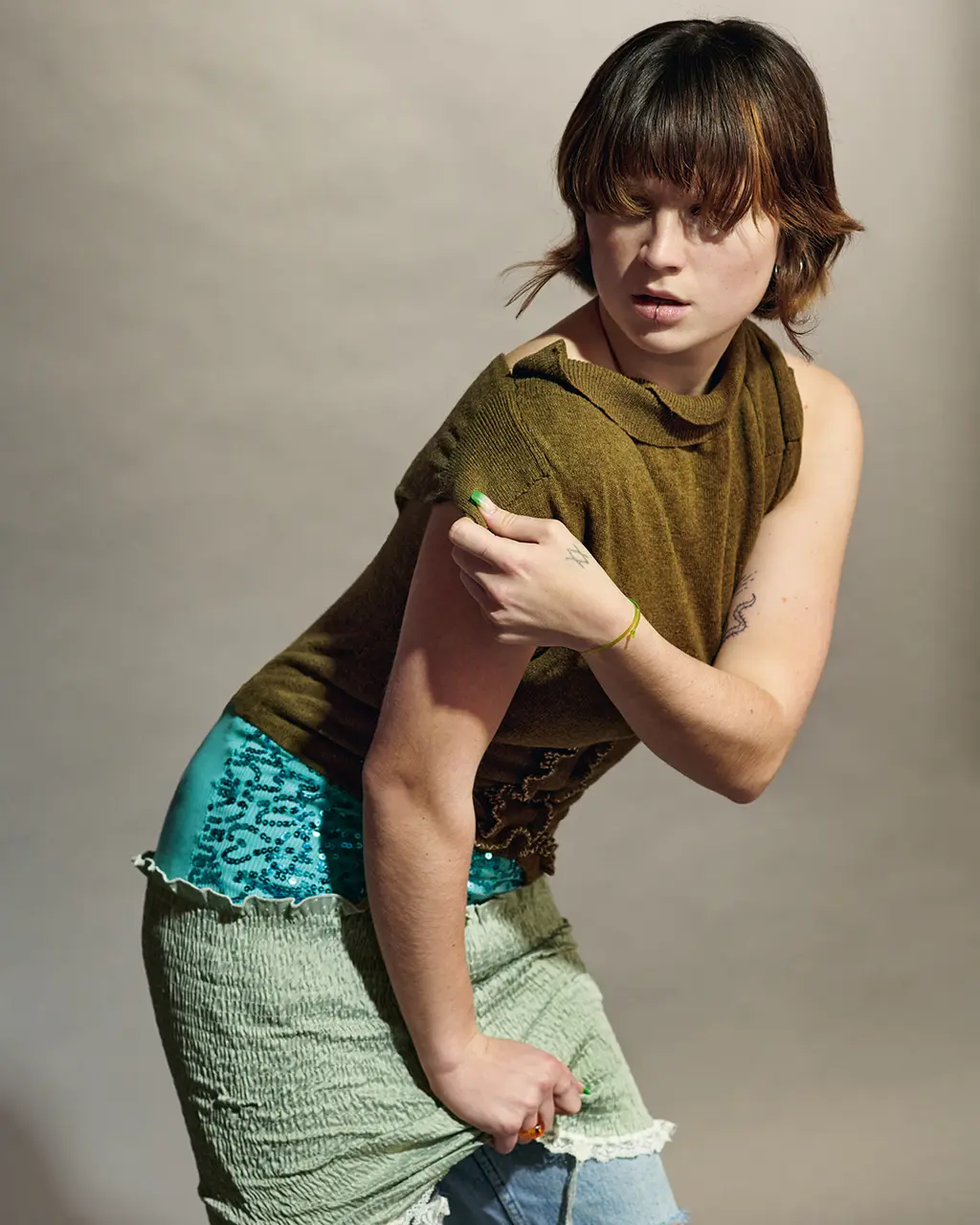
Doa wears dress ALL-IN and jeans GOLDSMITH VINTAGE
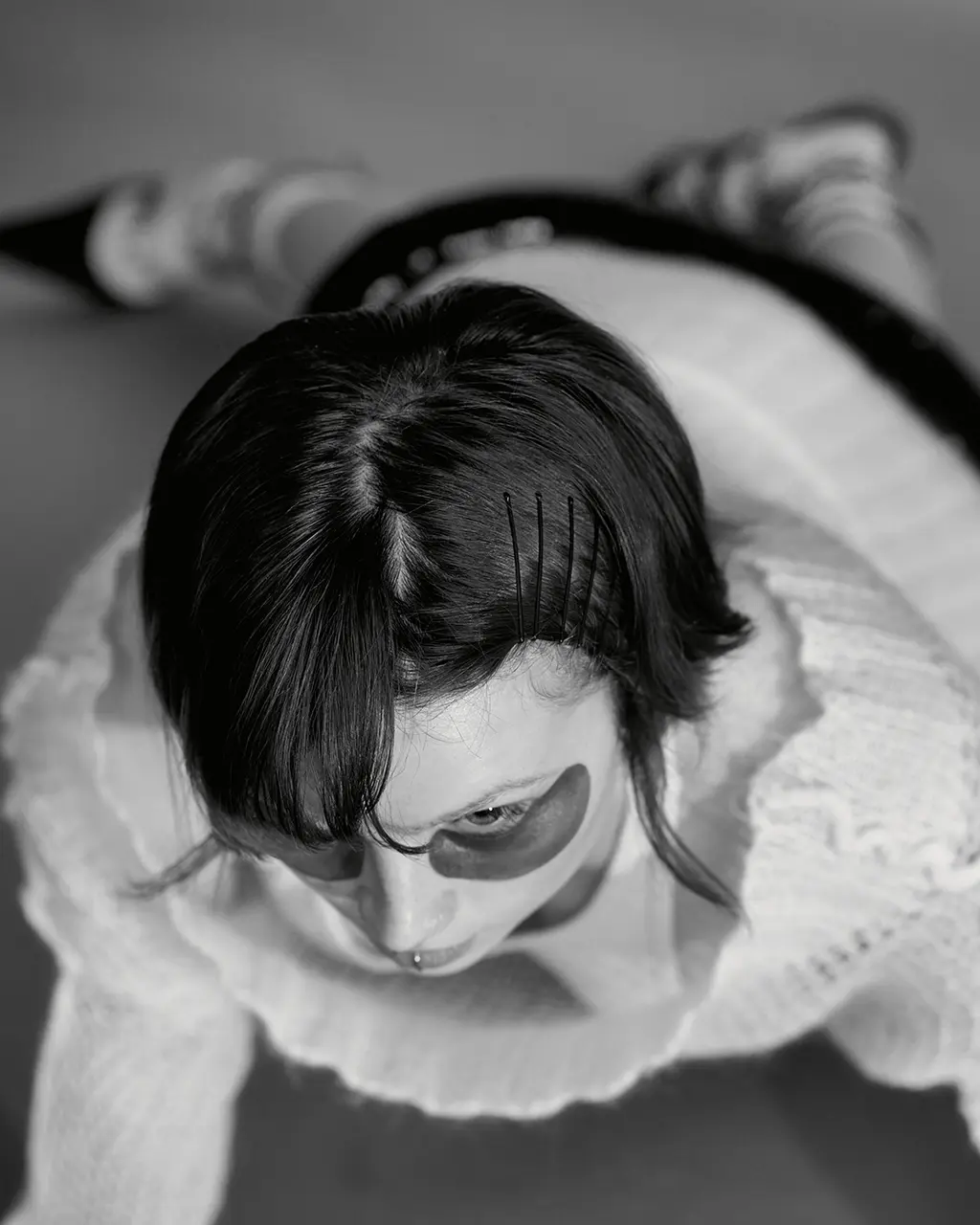
Doa wears dress and shoes ALL-IN and bodysuit BASERANGE
As for “Bjarkardóttir”, it reflects the Icelandic tradition of using patronymic or matronymic names. That is, a child’s second name is based on the first name of their mother or father. So “Bjarkardóttir” means the “dóttir” – daughter – of “Bjarkar”. That is, of Björk. And Barney, her third, is her American father’s name.
So, Doa is the daughter of the musician Björk (who also appears in The Northman, as the Seeress, a “Slav witch”) and the visual artist Matthew Barney.
None of this mazy naming has led to any kind of identity crisis for her – certainly not judging by the cool, funny, relaxed, warm and engaging student I meet over Zoom one grey, rainy day in Reykjavik in the first week of January.
Instead, it seems to have liberated her. More aliases, more wiggle room. An actor, filmmaker and musician, currently in her first year studying liberal arts at college in California, Doa can do – or will have a good go at trying – the lot, and more. Her parentage is only half the story. The other half is all her and what she might become.
Doa is sitting in the window of downtown record store Smekkleysa (which translates as Bad Taste) in the Icelandic capital. This is her “day job” in the homeland of her mother where, prior to further education and Covid, she would spend half of each year. The other six months she’d be in New York, an annual trans-North Atlantic shuffle necessitated by her parents’ 2013 split.
“From the beginning she was a very lively, innovative, sweet child,” says Sjón, who, via his old friend and peer Björk, has known Doa since she was a baby. “We shouldn’t think of kids of creative [individuals] automatically as people who will go only into cultural activities as well. But obviously when it’s all around you, and you grow up in that environment, it definitely becomes an option for your talent to show. And that is what is happening with Doa.”
Her role in The Northman came via her mother – although, as she tells it, the film itself also came into being because of Björk.
“It’s a pretty cute story. Sjón and my mother are very old friends, punking around 40 years ago in Reykjavik,” she begins. I know exactly the depth of that connection. In 1995, after I’d interviewed Björk for the cover of that June’s issue of THE FACE, I collaborated with her and Sjón on a coffee table book, Post, published to mark the release of her second solo album of the same name. At a time when Björk was one of the most beloved, in-demand musicians in the world, collaborating with all sorts of artists, from filmmaker Michel Gondry to The Brodsky Quartet via legendary Brazilian arranger Eumir Deodato, Sjón was clearly one of her oldest and most trusted confidantes.
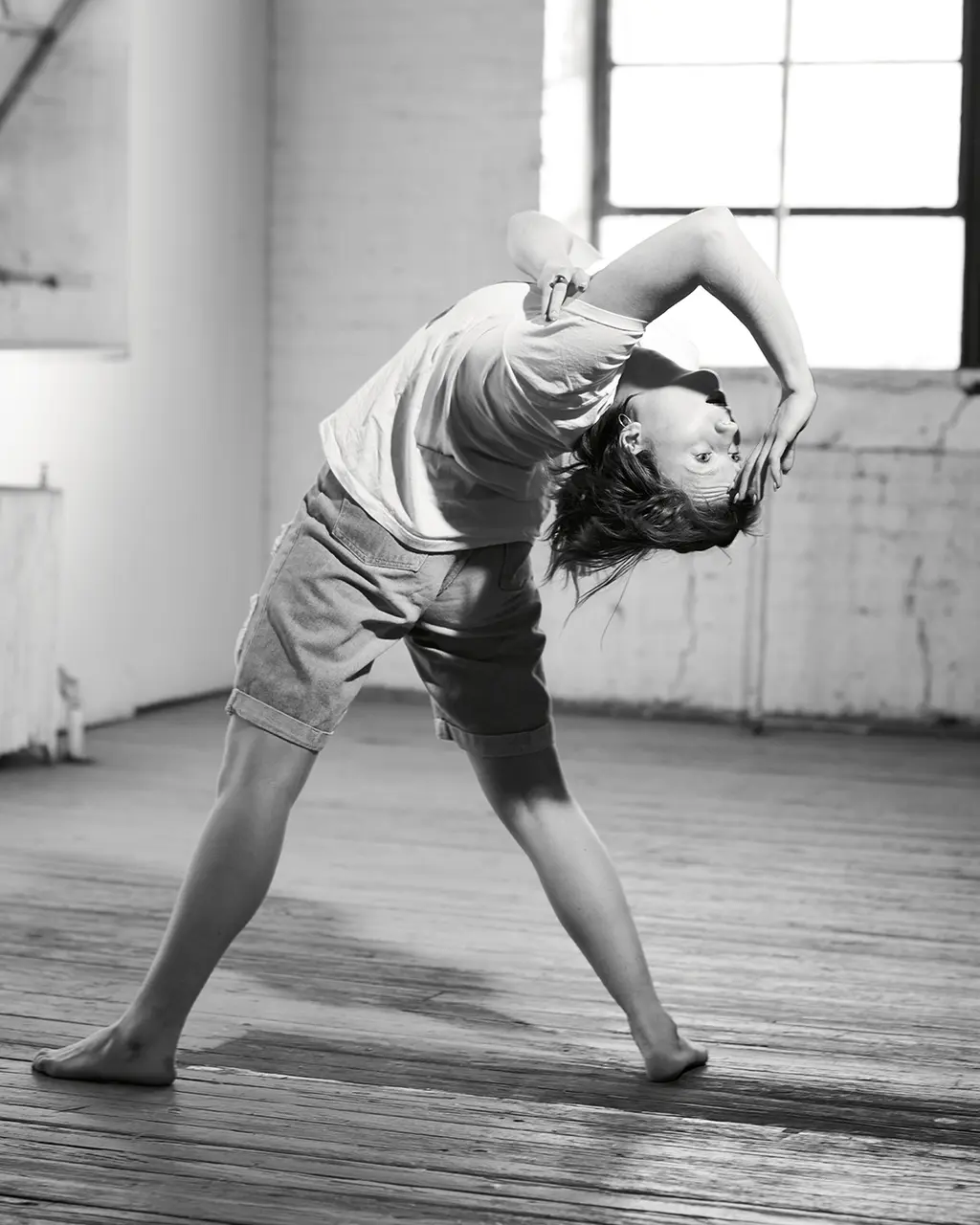
Doa wears shorts GOLDSMITH VINTAGE and T‑shirt talent’s own
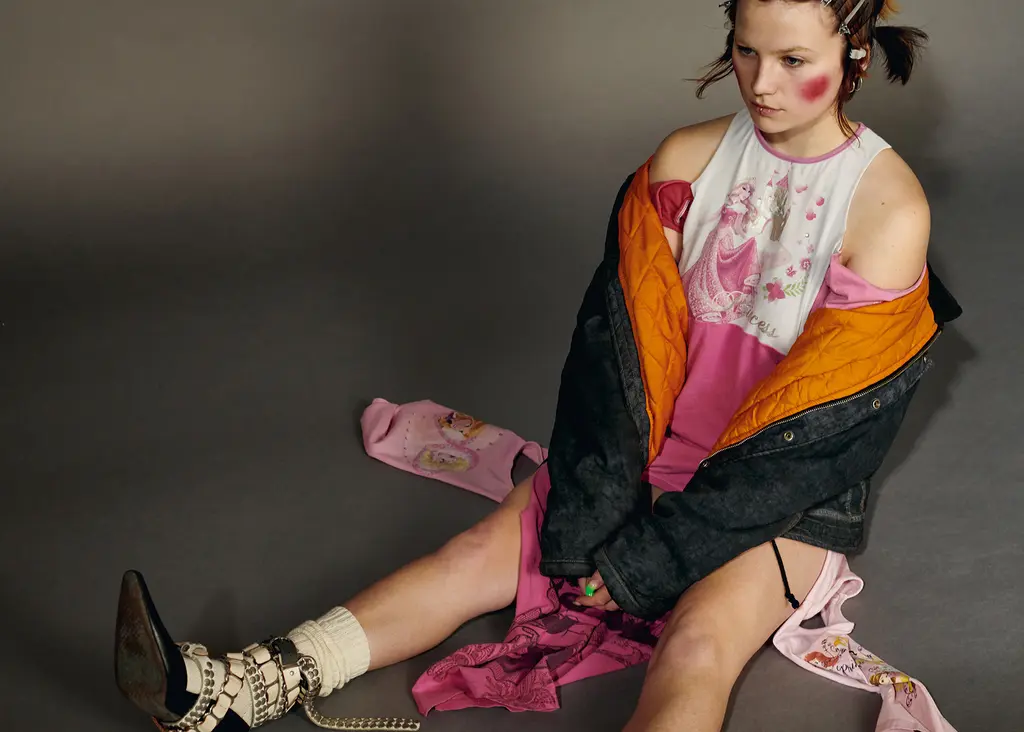
Doa wears dress and shoes ALL-IN and jacket GOLDSMITH VINTAGE
“And my mom knew Rob[ert Eggers] from the New York art scene somehow,” Doa continues. “When Rob came to Iceland, she introduced them to each other and they all shared a dinner at our cabin, a little ways out of town.
“She said that she had a feeling that they would like each other, that they have this shared respect for history. And Rob and Sjón are both poets in their own way – well, Sjón is a poet! And she was right. Then they wrote to her a few months later: ‘We have a script, you have to be in it.’ And she was like: ‘No.’ Then she was like: ‘OK, I’ll do this.”
That’s when a friend suggested Doa audition, too: “And so… I did. And… I got it! And it was… amazing!” she says, laughing again.
Had she expressed her enthusiasm for acting to her mother before? Doa nods.
“Since I was 13 or 14, I knew I wanted to take acting seriously. And she knew that. So she’s been so supportive. It was important to her that she would help me realise this.”
As first gigs go, it was no easy ride, and that was before she found herself acting in the open air in the grip of a Northern Irish winter. “There were some very tough days. I think anyone who was there would agree. Especially [for] my enslaved women and I! We were not exactly clothed for the weather – we were given slave attire. We were meant to be barefoot, but we did get these protectors for the bottoms of our feet.”
Filming on The Northman was due to begin in March 2020, with the production centred in Belfast (Northern Ireland has the appropriate geography and, post-Game of Thrones shooting there for the entirety of its eight seasons, the filmmaking craftspeople).
“That was the year I was [going] to graduate high school in New York and I was somehow [supposed] to do that while filming. But I was like: I just have to go do this and I’ll figure it out.”
Then, the pandemic. After a five-month delay, the now-graduated Doa flew into Belfast in late summer. She was there for the next three months, a period that encompassed both UK lockdown #2 and her turning 18. “That time was crazy,” she reflects, exhaling and eyes widening. “I was doing a lot of therapy on Zoom, which was fantastic. I feel really lucky for that. But I was just seeing my therapist, and the nurse at The Northman headquarters to Covid-test me, and then going to work.” (She thinks therapy should be a universal right. “It’s a great tool to have and I’m a huge fan of it. There’s definitely been points in my life where I’ve needed it more than others, like with [my parents’] separation, and then just general, um, happenings. But then it became a constant, staple thing.”)

Doa wears hat and T‑shirt stylist’s own and bag ALL-IN
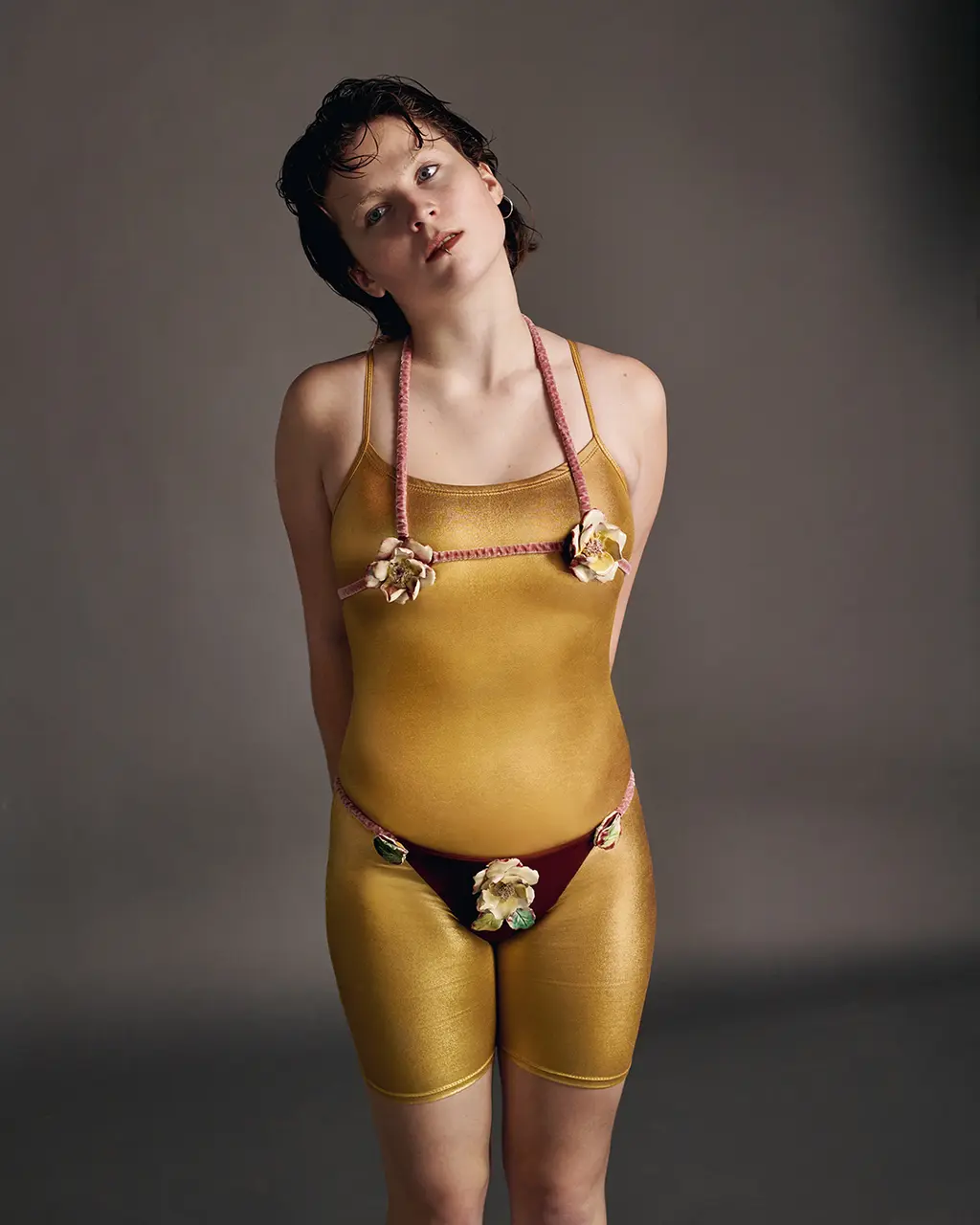
Doa wears bikini ALL-IN and bodysuit talent’s own
“Doa brings several things to the movie,” says Eggers. “For one, she’s one of the characters that lets us into the female experience of the Viking age. It is an action movie about a male warrior, but it is important to see all the different ways people lived in the period, in this world. Yes, these Viking men sailed all over the world. But who do you think was weaving those sails?”
Alas, there was no chance to work directly with her mother. “No, Melkorka and the Slav Witch did not cross paths!” says Doa. “However, I was there for her one scene and held her hand. She was also there for my big scene and we supported each other through that. That was a long, long scene to shoot! And she was a champ.”
Then, the working day finally done, “I’d go to Lidl, or Marks & Spencer. That was the only human interaction I was getting. It might just have been some hormone clicking for me but I grew – uh, I hate saying that,” she interrupts herself, face wrinkling, “but I grew, like, five times my size as a conscious person.”
Much of that period in Belfast is reflected in Almanak. It’s a series of shots of Doa – in the park, in the bath, staring out of the window, wandering deserted streets. Set to a soundtrack of Bird by Kelly Lee Owens and Walk Away by Alex G, it looks like how lockdown felt for a young woman a long way from home in a foreign city, unable to celebrate her 18th birthday.
“Initially, Almanak was just going to be for my mom, because she kind of motivated me to do it. She was like: ‘This could be a good birthday present for me, please do this.’ But she was doing it really for me, because she knew I needed a project to work on, which was so sweet of her. So then it also ended up being for me. And then it was weird that people saw it. Just people on YouTube – but they have their own interpretations. Which are interesting!”
There were other pressures, too. Björk wouldn’t want to be accused of nepotism and Eggers wouldn’t want to be charged with compromising his film by favouring one of his A‑list actors. Meaning: Doa had to earn her place on the set.
“Absolutely. That was a big thing. Still is, with music, with film, with the studio arts with my father – it’s all things that I’m really, really interested in. I could see myself putting my life towards those things. And I do work really hard.”
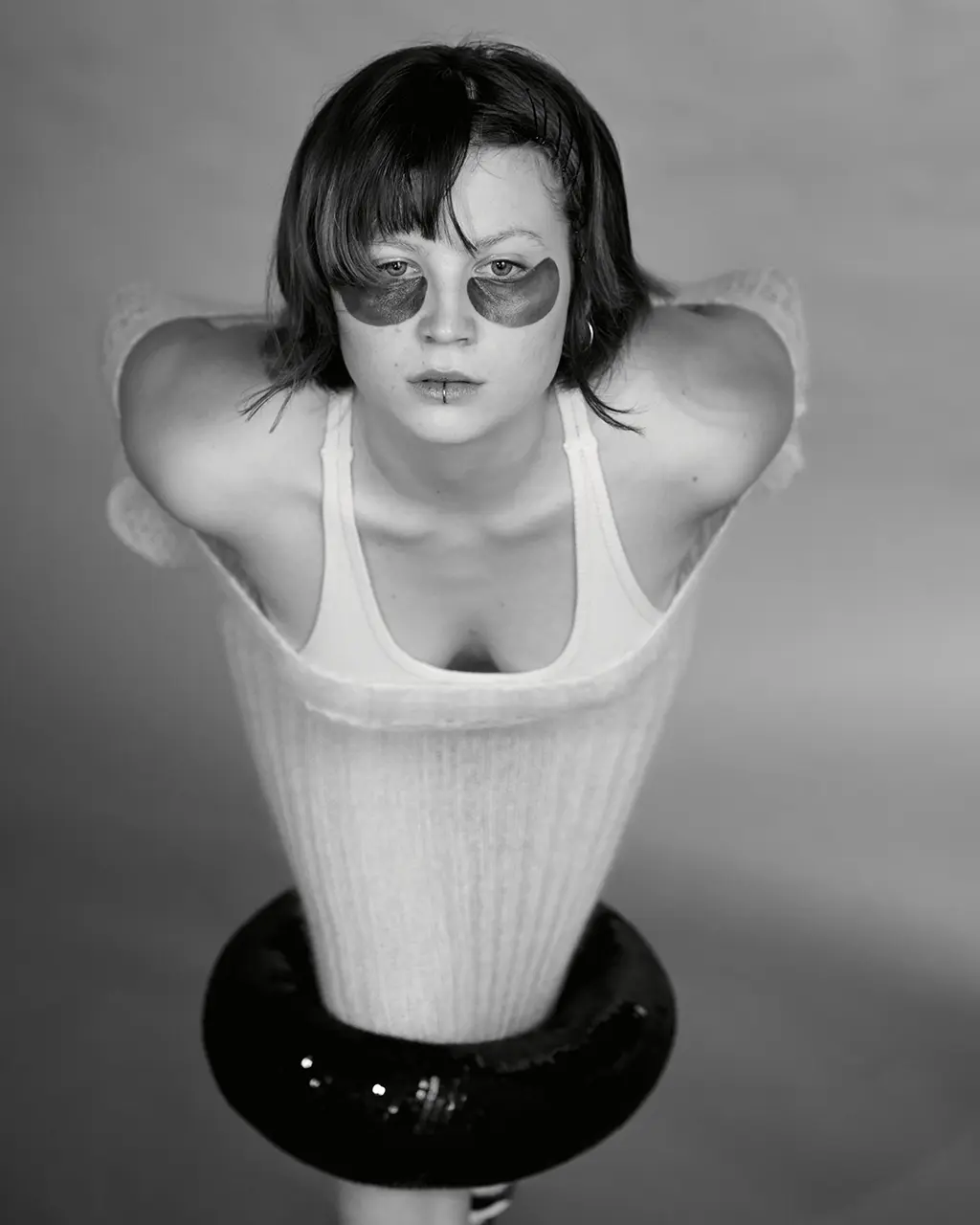
Doa wears dress and shoes ALL-IN and bodysuit BASERANGE

Doa wears dress and shoes ALL-IN
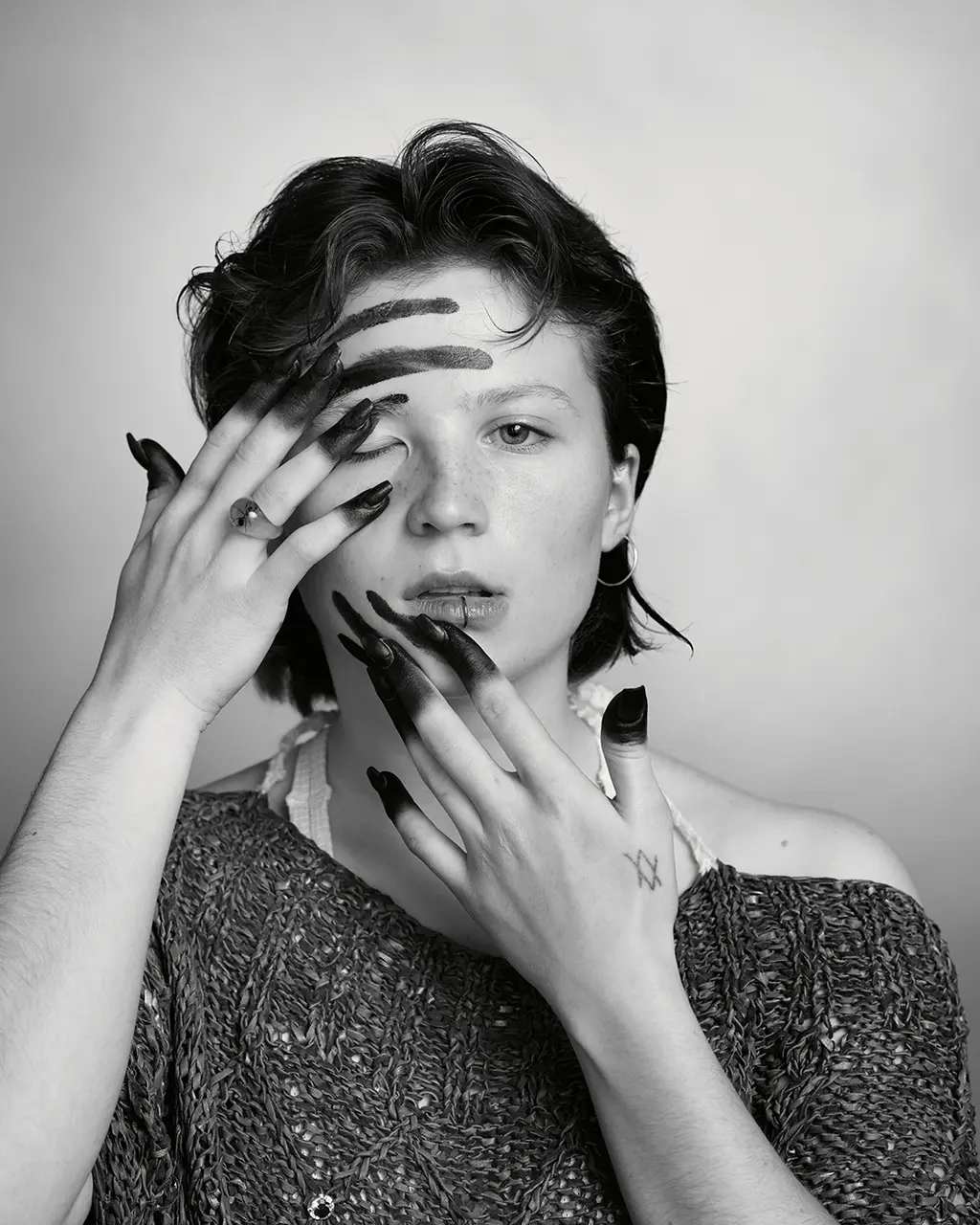
Doa wears dress ALL-IN
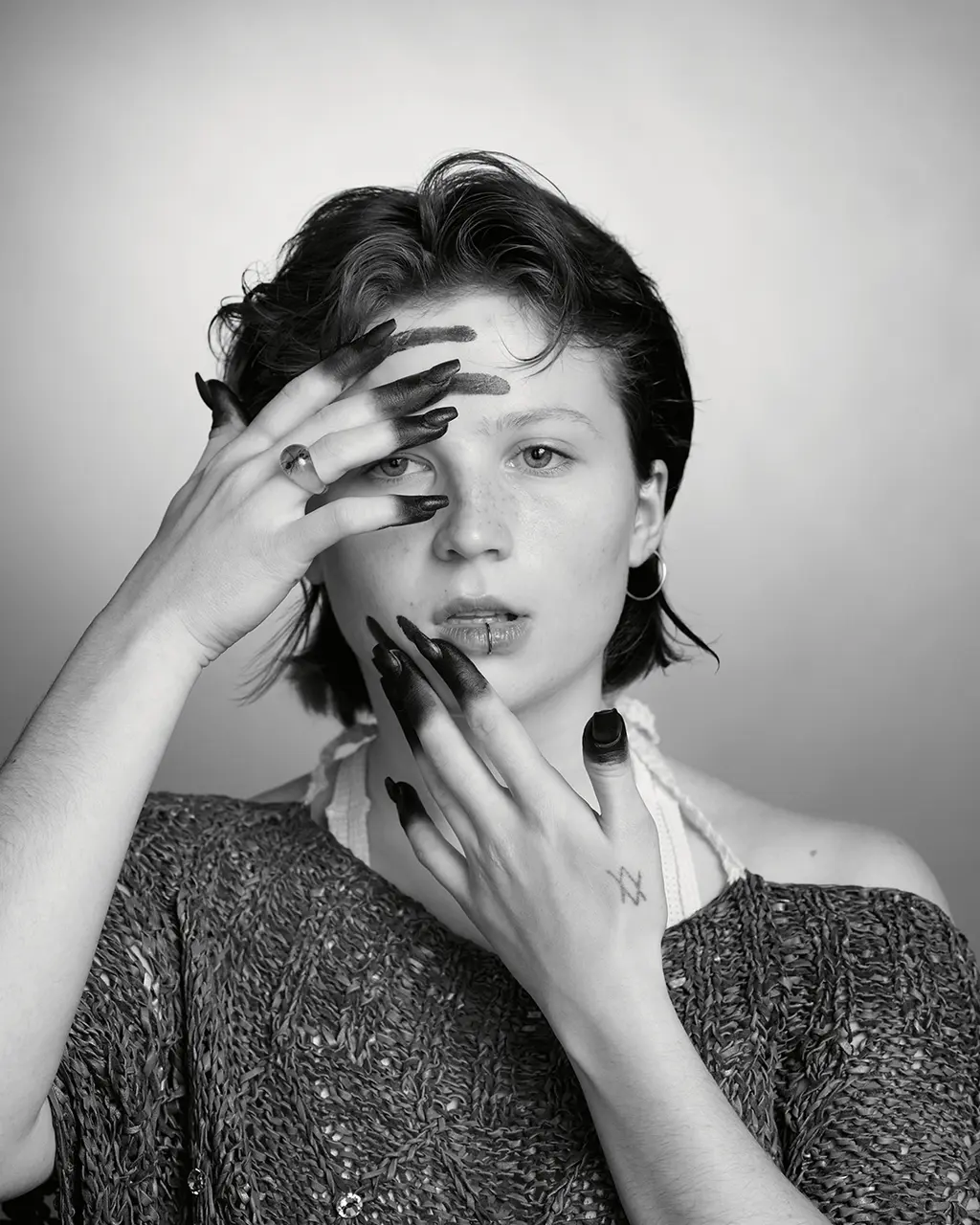
Doa wears dress ALL-IN
At the same time, she recognises that “a lot of people do work really hard. And they lack the connections, [where] you need someone to introduce you to the right person. I’m really lucky to have those introductions.”
“Doa was the best person for the role of Melkorka. But it was a difficult audition process,” Eggers tells me, one requiring a particular set of vocal skills. The director explains that, based on he and his collaborators’ research, “the current consensus” is that Old Norse singing by 10th-century women would have been “this kind of screechy singing”, a form not too dissimilar from contemporary Baltic and Slavic folk- singing. “And there are remnants of it in Sweden called kulning. That’s [what they do] to call the cows home and corral them.
“So she had to work on singing this faux Viking song we’d written in this kulning style, which she’d never done before. And she spent a lot of time working on that. She also had to do a very awkward Zoom audition where she was made to dance and prance around in a very theatrical, silly way. And Doa committed to it a thousand per cent. So she had the work ethic and the spark.”
With a labret piercing her bottom lip and a ski-type bandana girdling her head, on this wintry afternoon Doa is huddled in a black hoodie bearing the jaggedly rendered slogan “Stress is Satan”. It was a Christmas gift from her friend Hrafnhildur Arnardóttir, aka Shoplifter, an Icelandic designer and artist. Right now there are no customers in the record shop, because “I asked my boss if I could put a sign on the door [while we talked]. And he was like, ‘Sure, no problem.’ It’s very family, low-stakes work!”
What, I ask, are the current top sellers in Smekkleysa?
“Well, we have our whole Icelandic section. Let’s see what’s up there right now…” Doa says in a light American accent that nonetheless betrays her maternal genes when, curling her r’s like her mother, she says an Icelandic word or place name. She scans the walls and shelves. “Oh, we have this really cool thing that’s only out on vinyl, called Sugardoom. It’s this guy Krash Slaughta’s remix record of The Sugarcubes and MF Doom. Who’d have thought?” she says, laughing.
“I did actually get to listen to it once, because my friend bought it. But you can’t find it online or anything.” A mash-up of her mum’s late ’80s anarchist punk-slash-indie band with the work of the late, revered rapper and producer? Sounds brilliant. After we finish talking, Doa helps me order a copy from the Smekkleysa website.
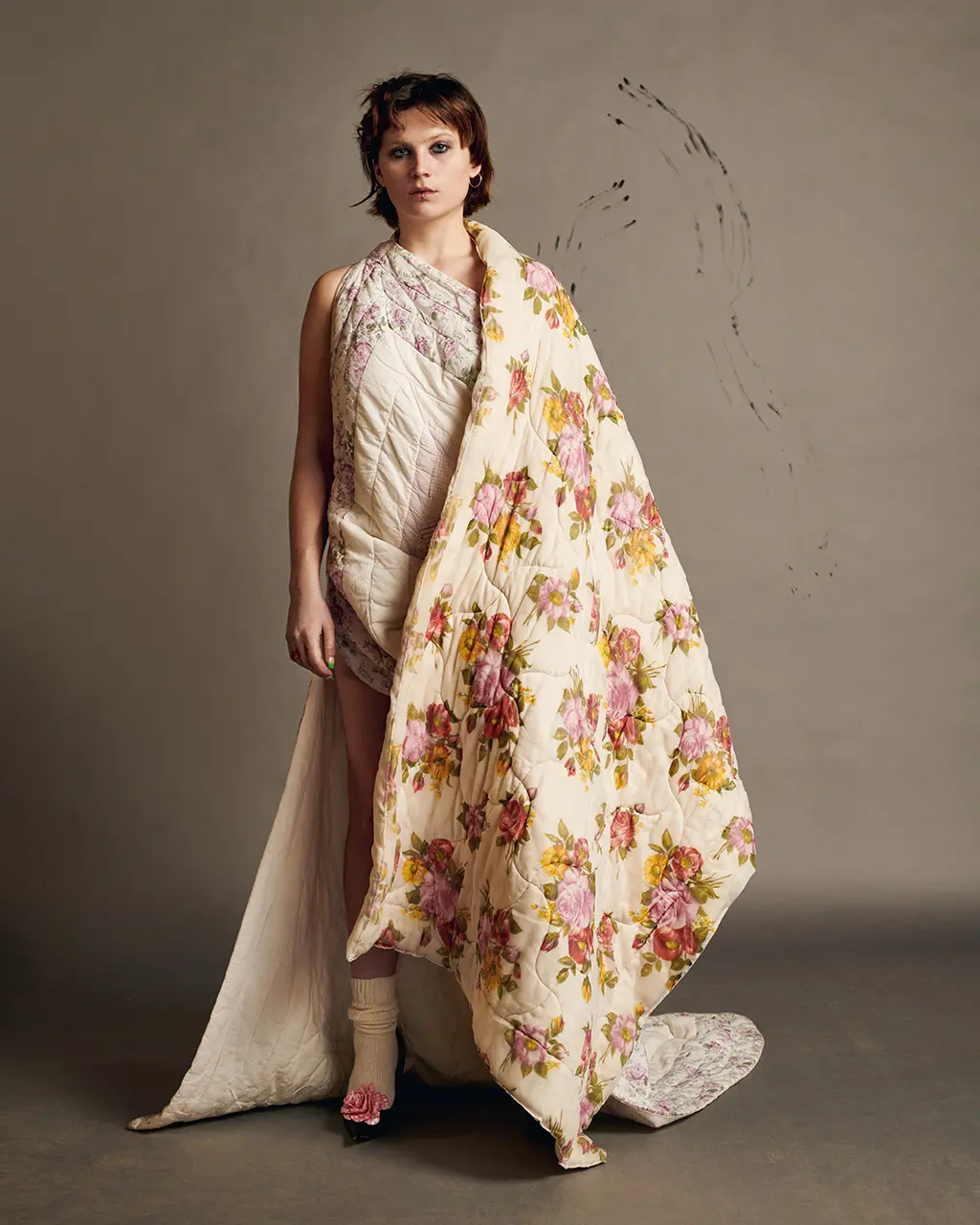
Doa wears duvet dress and shoes ALL-IN and socks FALKE
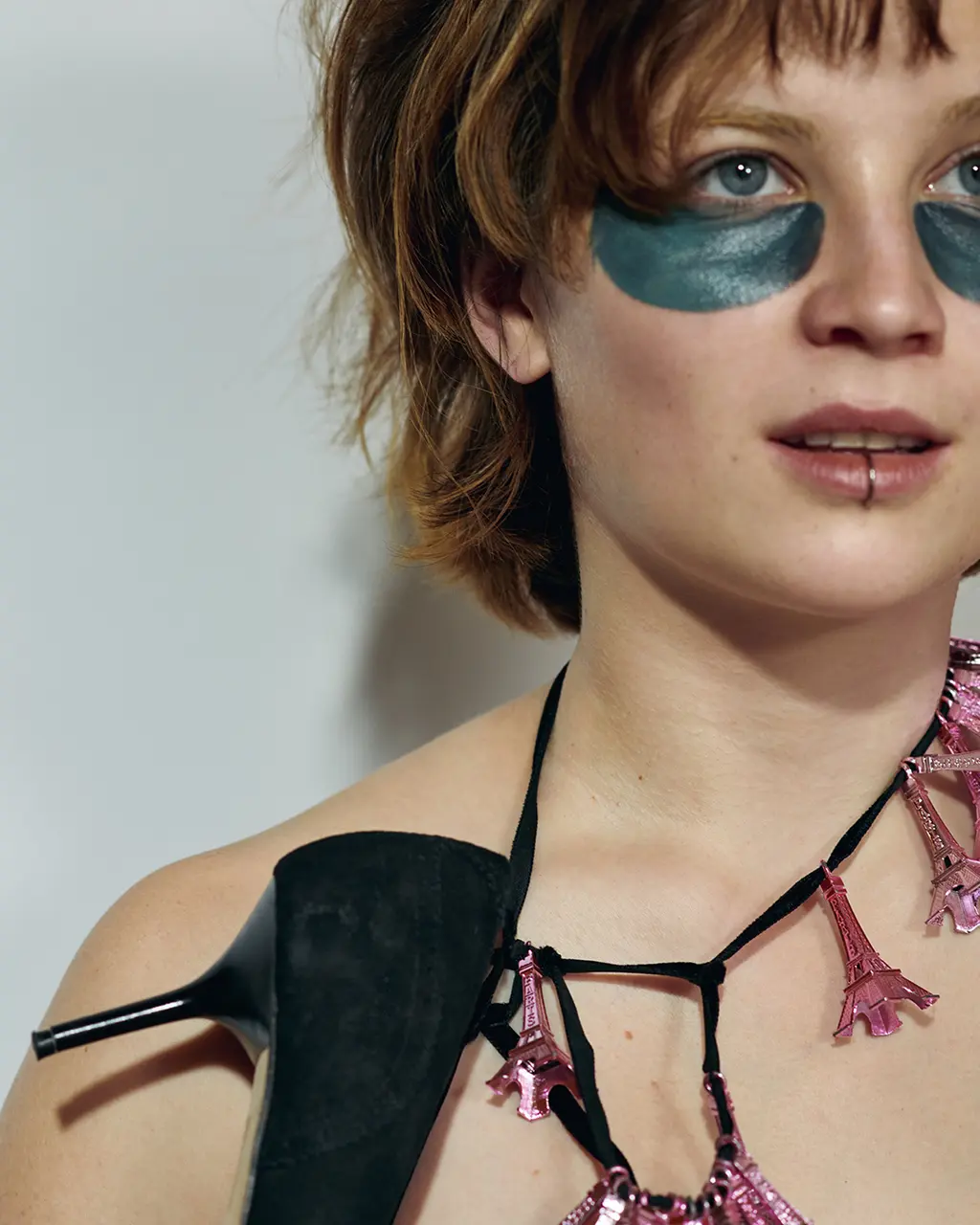
Doa wears shoe (worn as a necklace) ALL-IN
She makes her own music, too, although she’s edging into that only gingerly. There’s an on-off guitar band she sings in, “like 4/4 beat”, with three Icelandic friends, called FOOD after the four members’ initials. They have an album “that we’re sitting on. I don’t know what’s gonna happen with that.
“It was a form of therapy, to be honest,” she says. “We would sit down in someone’s garage and just start playing. And it was all improv. We had this unwritten rule: we can’t change the words or the chords after we improvise it. We can re-record. But we have to stick to what was first improvised. It’s more of a pastime than a serious venture.”
Her own music seems more of a sure thing – slightly. “Literally yesterday, I met with a friend of mine who just graduated from a music production programme here in Iceland and we’ve been working on producing one of my songs. I have this big archive of things I’ve written that I never thought would or should see the light of day. ’Cause I kind of left that to mom as her thing.”
When your mum is Björk, a decades-straddling indie, trip-hop, electronic and dance music cultural icon turned post-millennial, avant-garde multi-disciplinarian, fair play, you might say.
“So I haven’t really found my footing [as a] solo [artist]. But then, honestly, [during] Covid I really started to flesh out those tracks,” she continues, “and have a kind of album… sort of… maybe formulating. I don’t know how far I’m going to go with this. But it’s been a lot of fun working with these friends of mine, who are also just starting out and doing really, really cool things.”
Pushed to describe her sound, she squirms again. For sure, she loves Newsom. “And I love Tirzah, Elsa Hewitt, Four Tet, Floating Points, Oneohtrix Point Never, all inspirations for my music. I guess indie vocals, but more electronic production. And somewhat symphonic in scale. And then there’s some kind of, like, shoegazey vibes.” She cringes at her words. “I’m exactly the worst person to ask that question.”
Of course, when your mum is Björk, it’s inevitable that music will be baked into your being.
The musician, now 56 and also the mother of a 35-year-old son, Sindri (by former Sugarcubes guitarist Þór Eldon), hymned her infant daughter in Mouth’s Cradle (“Always love, always loves you, always loves you”) from 2004’s Medúlla. She did the same on Tabula Rasa, co-produced with Arca and taken from 2017’s Utopia. “It is a song I wrote to my daughter and it is about taking on generational traumas and clearing them up, in hope to give girls the least amount of luggage for their future,” wrote Björk in an October 2021 tweet titled score stories 9.

Doa wears dress and shoes ALL-IN and socks FALKE
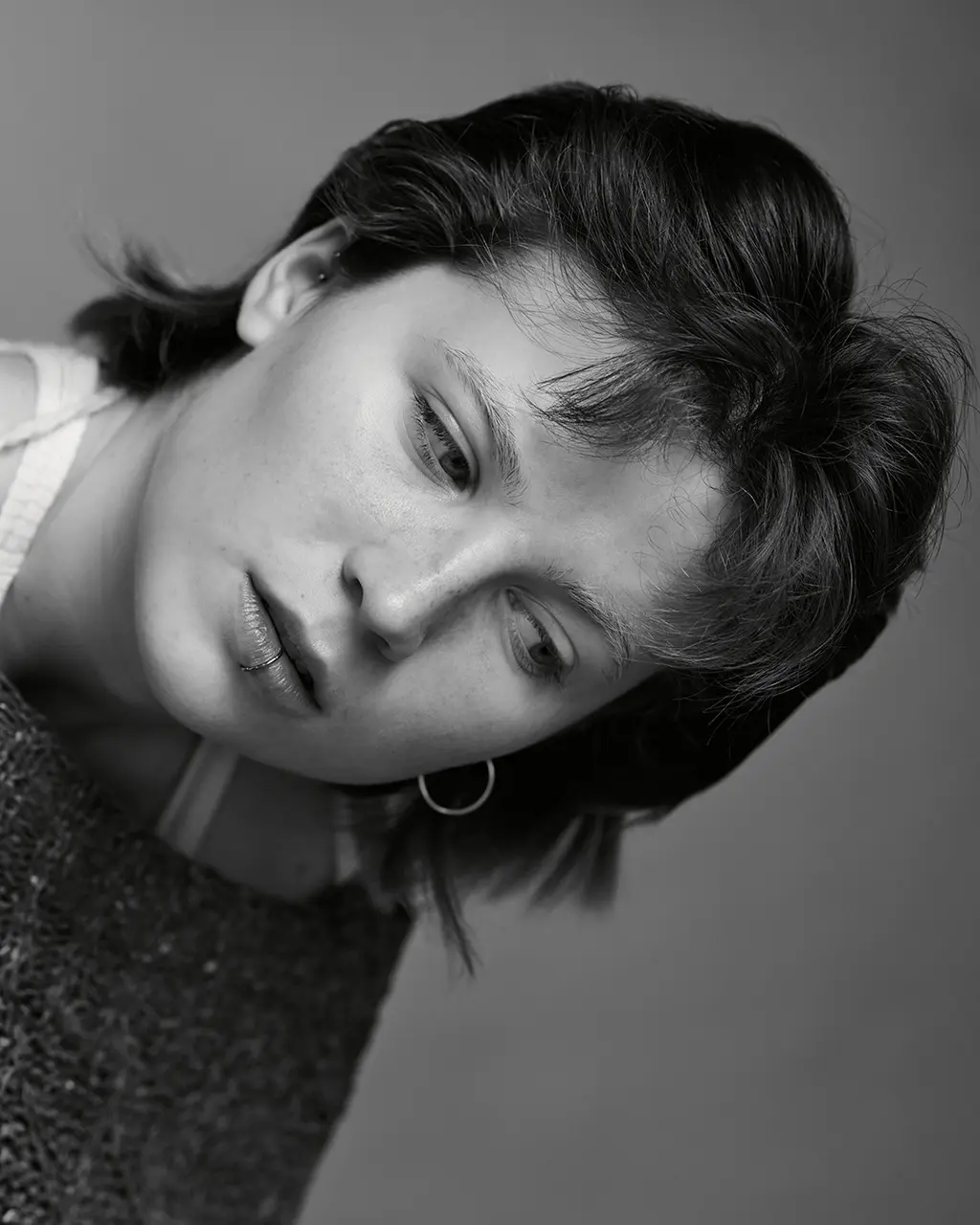
Doa wears dress and shoes ALL-IN and socks FALKE
“These are just really special gifts. I won’t lie and say that I don’t listen to them occasionally to feel that… mother’s touch,” Doa says, beaming, after a coy pause. “But, yeah, it’s special for sure.”
But then there’s the baggage of being, very publicly, part of that art. Björk and Barney’s split was initially acrimonious. With the couple mired in legal battles over custody of their daughter, for Utopia Björk also wrote Sue Me: “Sue me, sue me, sue me all you want/I won’t denounce her origin”. At the time she told a Belgian interviewer: “Ísadóra is my most tender possession… But patriarchy… that’s the big problem that I’m referring to.”
I ask Doa: when her mother and father were arguing in public, partly about her, how difficult was that?
“I think I really escaped [most of that]. I was really well protected through all of it. It was a weird age, for sure – I was 11 and 12. Luckily, they’re pretty niche when it comes to their audience!” she says, cheerfully. “Fellow 12-year-olds weren’t really listening to Björk or looking at Matthew Barney’s art! So it wasn’t like my peers were conscious of it, which is what my parents were worried about. Obviously, that didn’t happen.”
Accordingly, it was only a few years later that she became “really aware of it. And then it was, I guess, interesting to have this record of a really painful time,” she says, gamely. “And, honestly, I think it helped humanise the situation. That’s what artists do.”
Equally, as she points out, there were considerably more songs, and art pieces, about other things in the family’s lives. “And those are equally as honest and passionate. So it’s just one of those things. At this point I’m used to [the fact] that my parents’ lives are archived in their work. And that [episode] was another point in their life.”
At the time of our interview, Doa hasn’t seen The Northman, so she fluctuates, week to week, in her feelings about how well (or otherwise) she did in her first professional acting gig. Melkorka is, after all, “an important spirit in the story, who comes in at a key moment,” according to Sjón. Watching her on set, he says, “it was so lovely to sense this continuity of artistic collaboration with someone from the creative family that I come from in Iceland.”
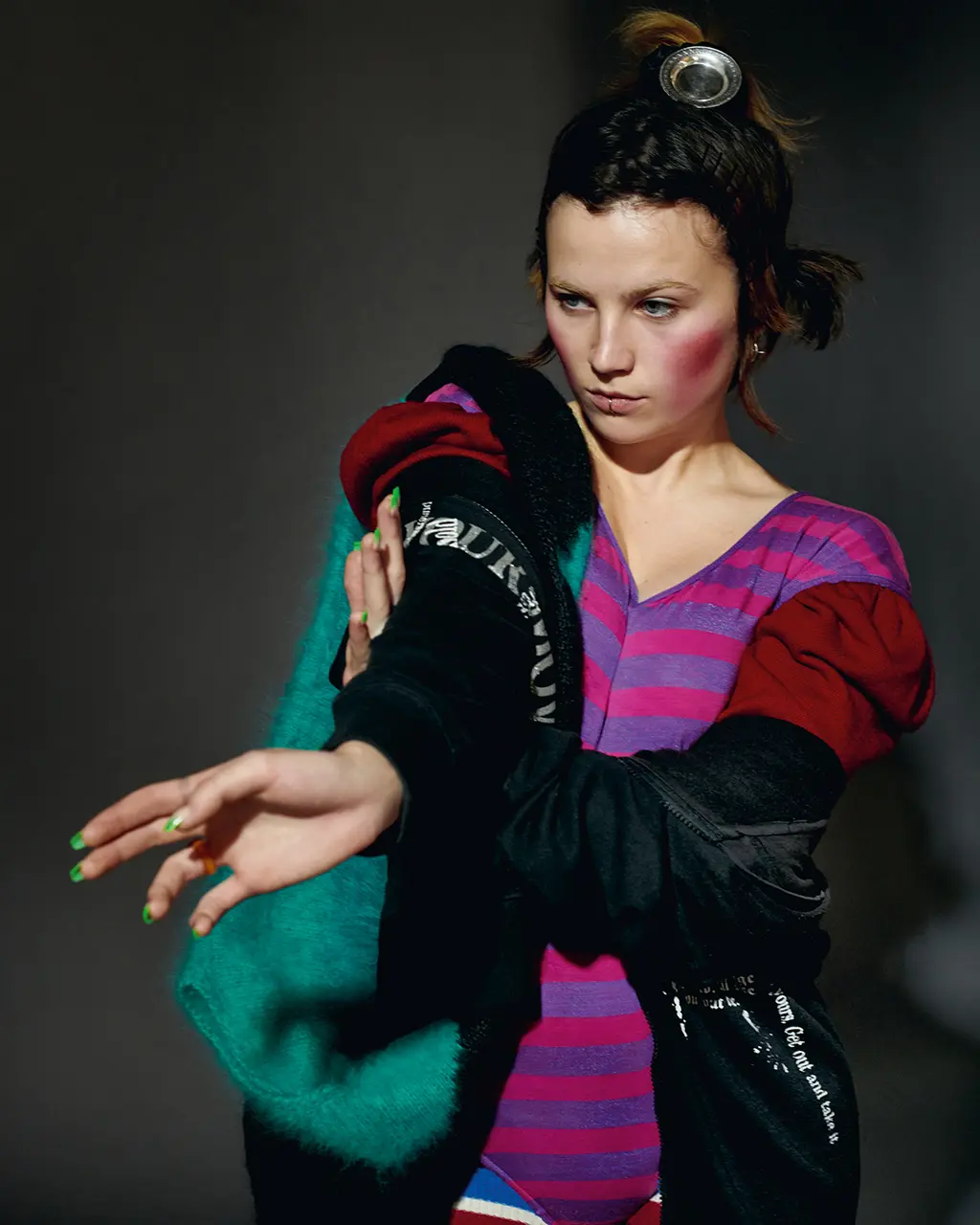
Doa wears bodysuit, hair tie and bag ALL-IN and hoodie stylist’s own
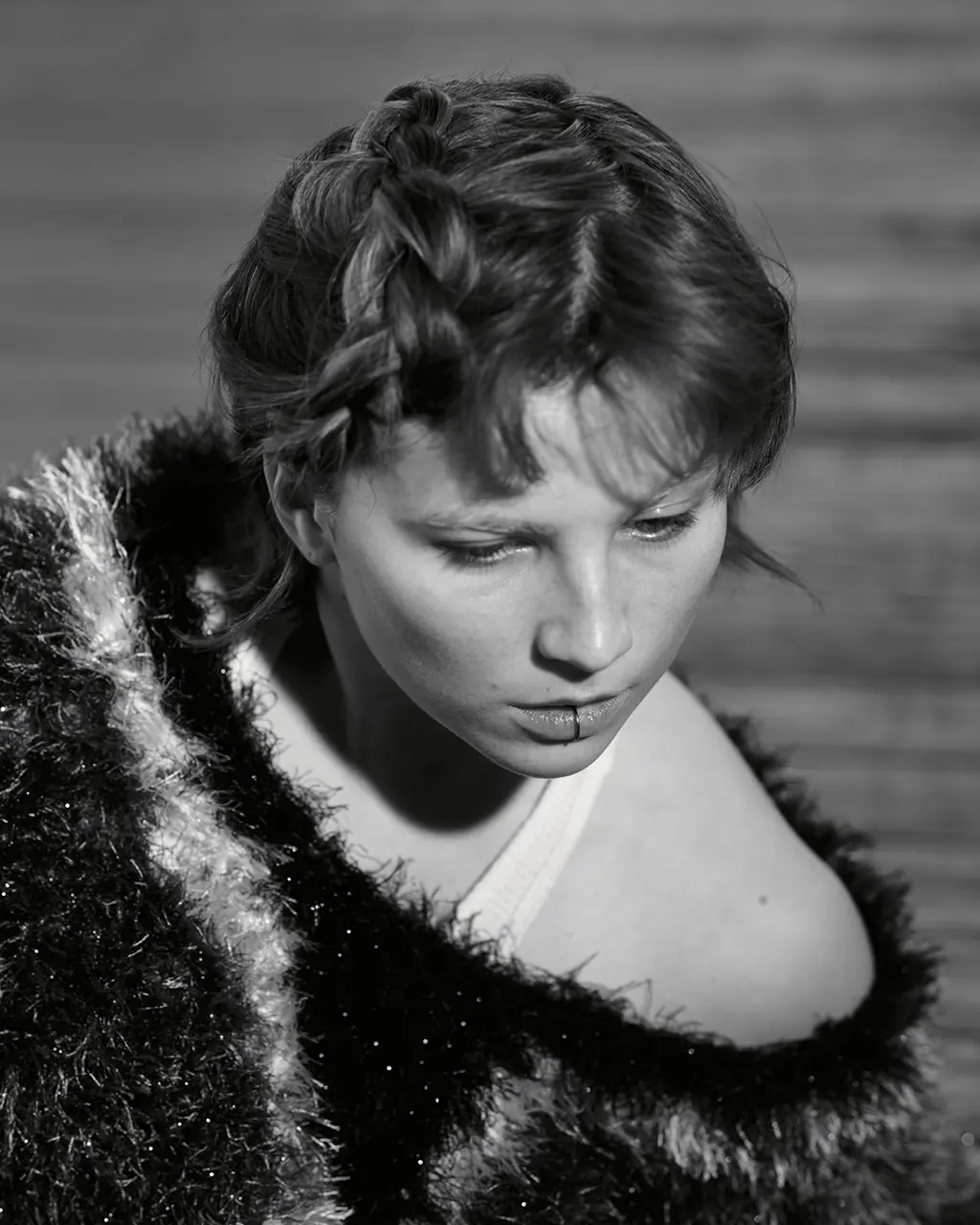
Doa wears jumper ALL-IN and bodysuit BASERANGE
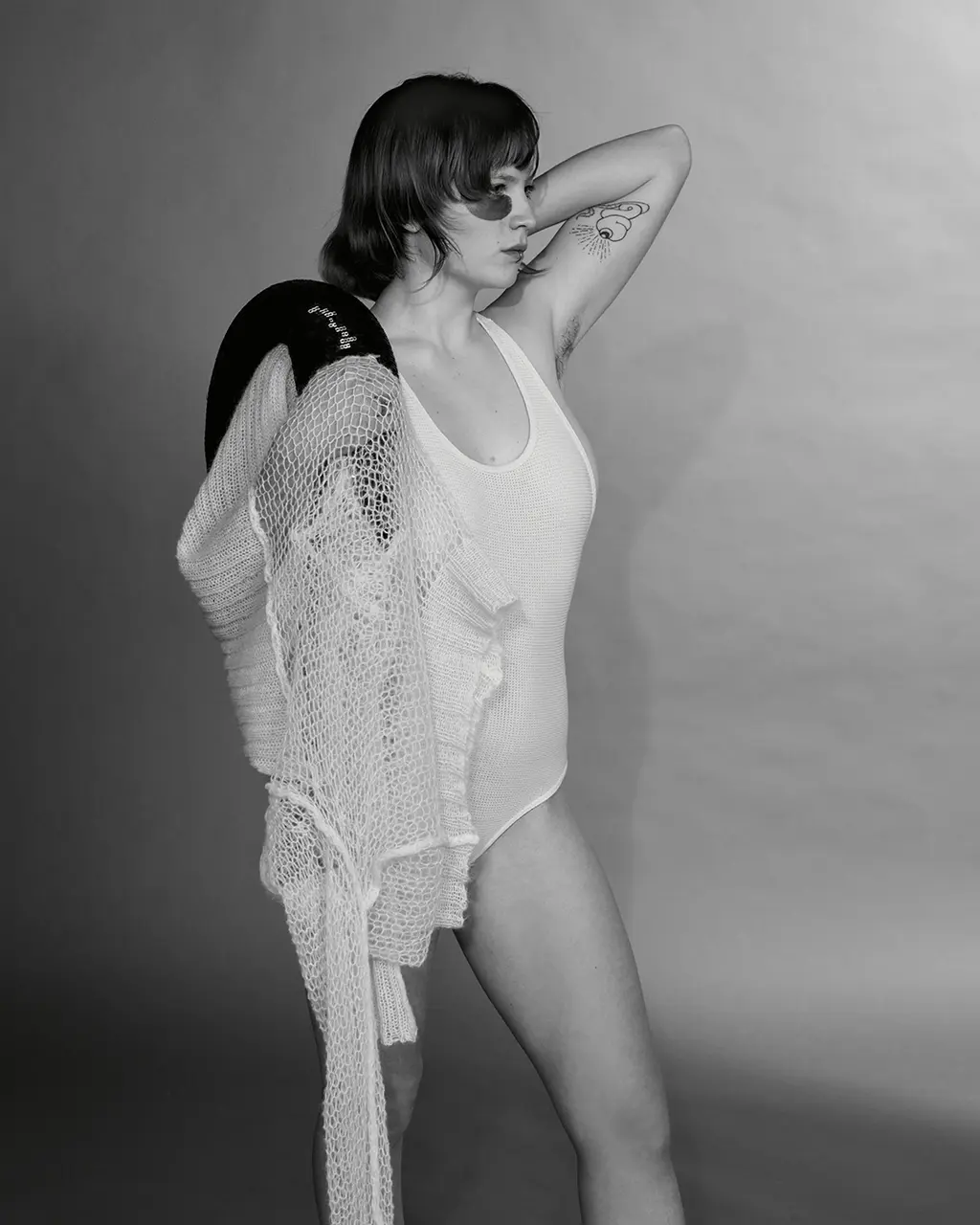
Doa wears bodysuit BASERANGE and dress ALL-IN
Despite that praise, “I’m definitely nervous about it,” Doa admits. “But I was such a fan of Rob, even before I met him. So if he said, ‘that’s a wrap, we’re on to the next scene,’ I trusted that he got what he wanted and that his vision was completed. And that is good enough for me. But definitely I was always aware that I did not have the experience to be able to easily flow through scenes.” On those muddy Northern Irish sets, “my wheels were churning”.
For now, it’s back to uni. In the days after we talk she’ll be flying to America for her second semester. She’s enrolled at Pitzer College, one of seven highly selective private institutions known as the Claremont Colleges, located 30 miles east of downtown Los Angeles. How does she find living in California?
“So different! Like, vastly different! Despite having travelled a lot, California is probably the most alien thing to me to be spending a lot of time in. The dryness!” says this climatologically-inclined northwoman. “It’s boring to talk about weather, but it actually has such an impact. I didn’t think I would miss seeing moss in the cracks on the concrete.”
When I ask what, specifically, she’s studying, as part of her liberal arts programme, she exclaims: “It’s a good question! I’ve kind of been all over the place… But ultimately, I would like to have a focus on acting – possibly [with] a more production standpoint, to have that kind of background. But I’ve been taking a lot of courses that interest me, in subjects that have nothing to do with that, too.”
If she can’t tell where she’s immediately headed, maybe her first director can. I ask Robert Eggers what he sees Doa doing next.
“Wherever she wants!” he replies. “Both her and her mum have the work ethic I was describing. You know, Björk is Björk. She dresses as you’d imagine Björk to dress, even if you’re having a casual dinner party. But that’s not a public persona – it is completely who she is. Doa is similarly herself.”
What’s in a name? Everything and nothing. But Doa will carve her own.
MAKE-UP Yumi Lee DIGITAL TECH Mike Webb PHOTOGRAPHER’S ASSISTANT Dylan Garcia STYLIST’S ASSISTANT Fausti LIGHTING ASSISTANT Ari Sadok


















